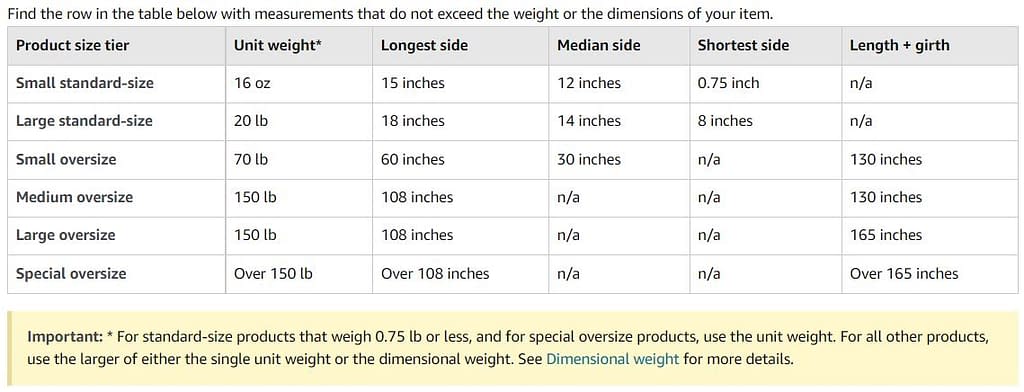Amazon’s fulfillment centers charge for storage of FBA inventory. Amazon charges FBA storage fees to sellers through Seller Central. That’s because storage at Amazon’s fulfillment centers is finite. Moreover, Amazon does not value all products equally.
When Does Amazon Charge Different Rates on Storage?
Storage charges vary from product to product at Amazon. For example, dangerous goods receive a higher storage rate. Similarly, products stored for more than 365 days incur higher ‘long term’ storage rates. Alternatively, oversized products take more cubic space. Therefore, they incur higher storage fees too. Lastly, Amazon adjusts its storage rates based on seasonality. This post examines FBA storage fees, FBA inventory limits, and everything related to storing products at Amazon.
How Are FBA Storage Fees Calculated?
Amazon explains their storage calculator here. But, FbaZoom read it, so you don’t have to! Amazon’s storage calculator is based on four criteria:
- Product Size Tier
- Current Month
- Average Daily Units
- Dangerous Goods Classification Status
In fact, let’s look at each category in more detail.
Amazon Product Size Tier
Product size tiers are measurement categories based on unit weight, product dimensions, and dimensional weight of a packaged item. To demonstrate, see the chart from Amazon’s website:

Seasonal FBA Storage Fees
Storage fees vary by time of year based on peak shopping seasons. To clarify, look at standard vs seasonal storage rates:
| Non-Dangerous Goods Products | ||
| Month | Standard-size | Oversize |
| January – September | $0.75 per cubic foot | $0.48 per cubic foot |
| October – December | $2.40 per cubic foot | $1.20 per cubic foot |
Unquestionably, Quarter 4 charges more for FBA storage. FBA storage rates for oversized products cost less per cubic foot, but more per unit (since each unit takes up more cubic feet).
How ‘Average Daily Units Stored’ Affects FBA Storage Fees
In addition, the average number of units stored in FBA per month contribute to your fees. As long as, you sell well, your daily average decreases. However, If your good stay stagnant, your average functions as a higher multiplier for the fee calculator.
Amazon’s Dangerous Goods Classification Status
Goods which pose a risk during storing, handling, or transporting because they contain flammable, pressurized, or corrosive products. “Dangerous goods” also refers to consumer products such as laptops, smartphones, household cleaners, spray paints, and cosmetics. To be sold through FBA, your products must be correctly classified, regardless of whether you’re enrolled in the FBA Dangerous Goods program.
How to Apply to Amazon’s Dangerous Goods Program
Take a quick look on how to apply to Amazon’s Dangerous Goods Program Here.
